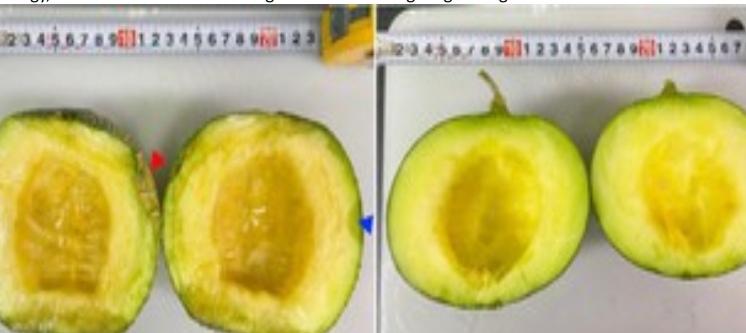Japanese researchers develop genome-edited long-lasting melons

A research team led by a University of Tsukuba professor announced they have succeeded in creating melons that can be stored for a long time using genome editing technology that efficiently modifies their genes.
Hiroshi Ezura, professor of plant molecular breeding, commented, “If we can improve the shelf life of vegetables and fruits with this technology, it will help reduce food loss and expand overseas sales channels.”
Ethylene, a gaseous plant hormone released by vegetables and fruits, stimulates ripening and causes additional ripening after being harvest. Among the genes necessary for ethylene synthesis, the team focused on “CmACO1,” which is found mainly in fruits after they are harvested. Using genome editing technology, researchers eliminated this gene when creating long-lasting muskmelons.
Genome-edited melons, right, and normal melons are seen two weeks after being harvested in this image provided by the University of Tsukuba and published in the journal Frontiers in Genome Editing.
Researchers harvested normal and genome-edited melons and compared their ripening progress at room temperature. The results showed that normal melons produced the highest amount of ethylene two weeks after being harvested, and the skin turned yellow and the insides became soft. On the other hand, the genome-edited melons produced only one-tenth the amount of ethylene, and even after two weeks, the skin remained green and the insides were still firm.
If the melons can be commercially sold, the team plans to sell them when they are still hard — in the same state as imported bananas — and treat them with artificially created ethylene prior to sale.
The genome-edited melons developed recently were less than half the size of a typical melon, but the team says they were also able to produce a melon that lasted longer while retaining its size through joint research with the National Agriculture and Food Research Organization in Tsukuba, Ibaraki Prefecture.




